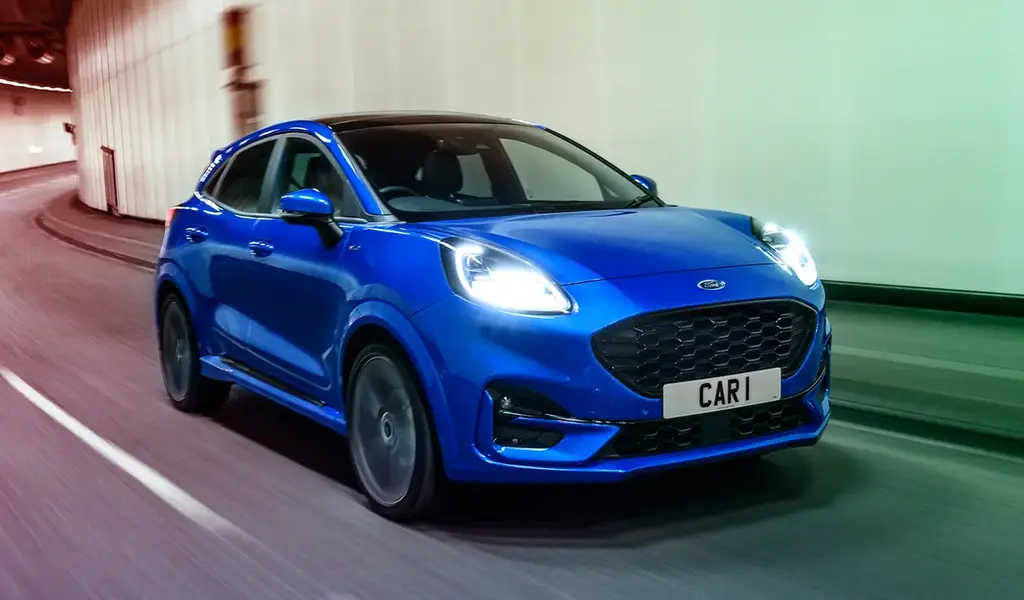(CTN News) – The National Highway Traffic Safety Administration (NHTSA) is launching an investigation into Ford’s BlueCruise driver assistance system following two tragic accidents.
Both incidents involved Ford Mustang Mach-E vehicles colliding with stationary objects during nighttime operation while the system was active.
BlueCruise is designed to facilitate hands-free driving on specific roads, primarily highways. In response to the investigation, Ford has expressed its cooperation with the NHTSA’s inquiry.
One of the accidents occurred in February, where a Ford Mustang Mach-E equipped with BlueCruise struck the rear of a stationary Honda, resulting in the tragic death of the 56-year-old driver of the stationary vehicle, according to Reuters.
Another collision involving a Ford Mach-E equipped with BlueCruise happened in March in Philadelphia.
The NHTSA’s investigation will particularly scrutinize the driver monitoring functionality of the BlueCruise system, which utilizes eye-tracking cameras to gauge driver attention and alerts them to retake control if attention drift is detected.
Additionally, the NHTSA’s probe will assess the system’s overall performance in driving tasks. The accidents prompting this investigation are being separately examined by the National Transportation Safety Board (NTSB).
Approval and Implementation of Driver Assistance Technology in the UK
The driver assistance technology has also gained approval for usage on select UK motorways, albeit with variances in implementation and regulatory frameworks, according to experts.
Currently, it stands as the sole permitted driver assistance technology in the UK that allows drivers to momentarily take their hands off the wheel. The system is restricted to specific road segments and operates within a speed limit of up to 81mph (130km/h).
The “hands off, eyes on” feature was introduced in the UK last April after receiving governmental authorization.
Transport minister Jesse Norman welcomed its introduction, noting that driver assistance systems not only enhance driving comfort but also contribute to road safety by minimizing the potential for human error.
While the Department for Transport refrained from commenting on the ongoing US investigation, it emphasized that the approval granted for Ford’s BlueCruise system in the UK followed a meticulous examination and evaluation process.
The NHTSA’s recent scrutiny of driver assistance systems and their efficacy post-crashes coincides with its investigation into the effectiveness of Tesla’s solution for safety concerns identified in its Autopilot driver assistance system.
Similar to BlueCruise, Autopilot represents a Level 2 autonomous driving software, offering partial automation wherein certain driving aspects are managed by technology, such as speed control and parking.
However, Autopilot mandates drivers to remain attentive and keep their hands on the wheel.
In response to safety issues, Tesla initiated a recall through an “over the air” software update to over two million of its electric vehicles in December.

BlueCruise Experience on the M25
Zoe Kleinman, the BBC’s technology editor, had the opportunity to test out Ford’s BlueCruise hands-free technology in January on one of the UK’s busiest motorways, the M25.
Her experience was a mix of relaxation and stress, as she relinquished control of the vehicle traveling at 70 mph amidst morning traffic.
Despite the relief of not needing to steer, she also felt a sense of unease knowing she wasn’t actively in control. She noted that the moment her attention diverted from the road, BlueCruise disengaged, returning full control to her.
While the system effectively kept the car within its lane and maintained a steady speed relative to traffic, Zoe observed some actions taken by BlueCruise that she personally wouldn’t have chosen, such as undertaking in the left lane and seemingly accelerating on slip-roads when exiting the motorway, prompting her to intervene by applying the brakes.
Summing up her experience, Zoe remarked that while BlueCruise represents the beginning of a promising technology, it still has a considerable distance to cover before becoming genuinely beneficial.
She also raised the critical question of whether drivers will ever feel entirely secure in relinquishing control to such systems.






